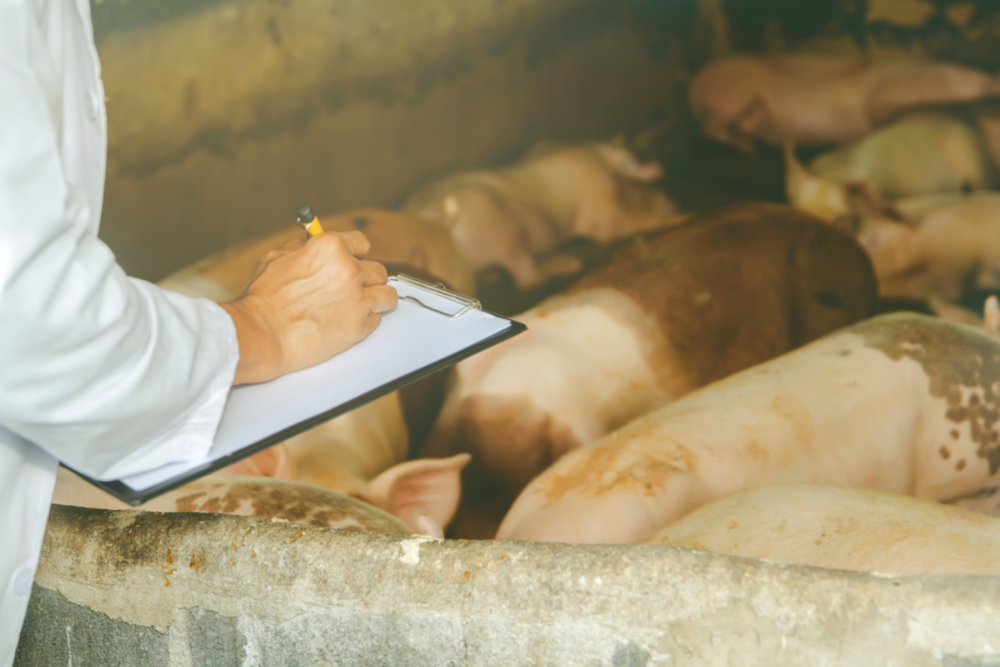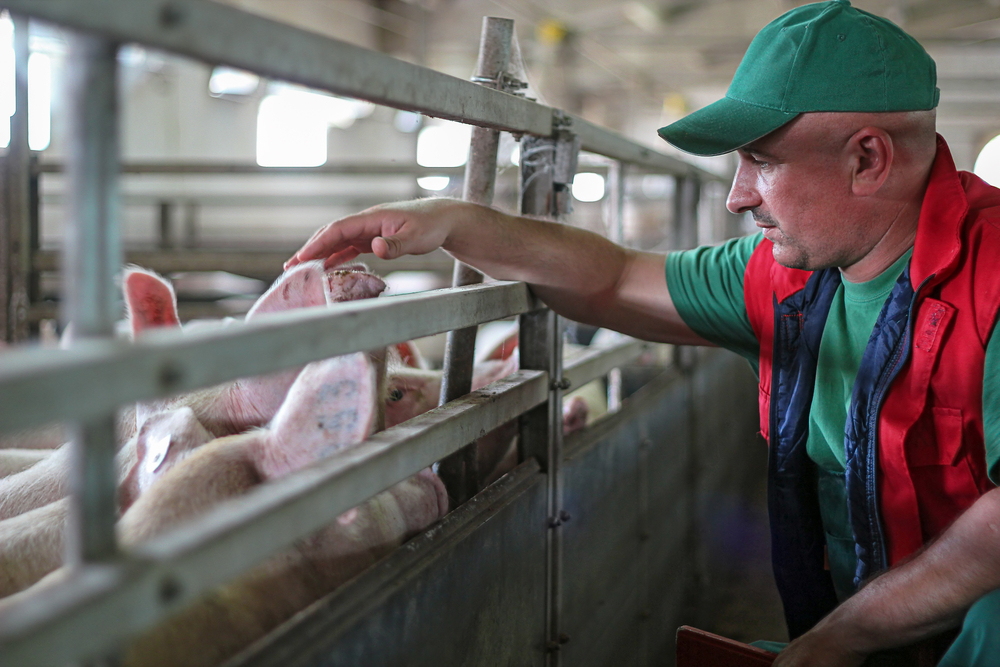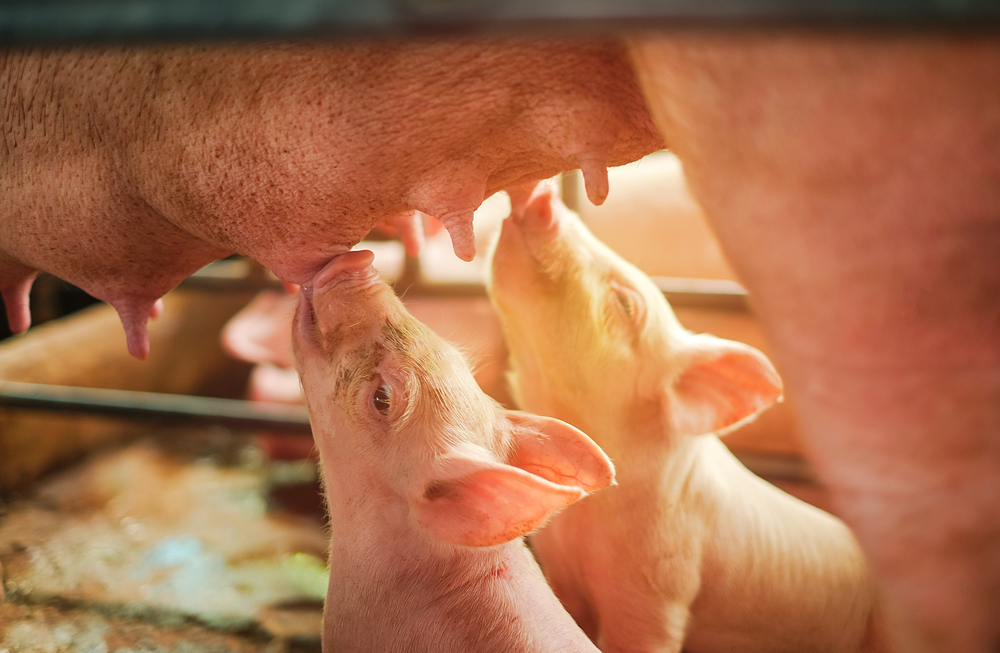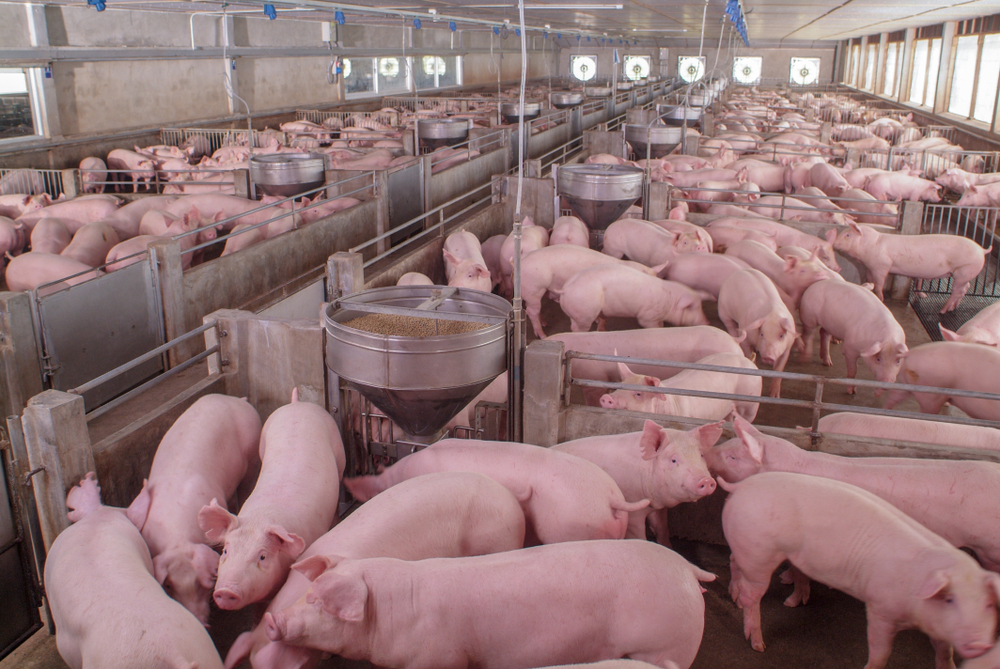Pork has always been an industry concerned with efficiency, but with the increasing entanglement of research, tech and good old-fashioned husbandry in a barn, questions about the biological development of commercial pigs have become more pressing than ever. John Sonderman, Director of Technical Services for DNA Genetics® and long-time professional in the field of swine genetics, weighs in on his findings and strategies for prime fostering strategies for different types of swine facilities.
Navigating Nurse Sows
Though Sonderman began his work with DNA Genetics in nutrition, he has since moved to leading the Technical Service Team. DNA evaluates research conducted on the 8,000 purebred sows located in DNA Genetics-owned facilities throughout the Midwest and Canada, as well as the company’s 10 testing centers that evaluate some 90,000 offspring per year. They also have the ability to perform research in a 70,000-sow farrow-finish system. Due to such extensive work, the question has been posed to Sonderman: why is nurse sow management becoming such an important consideration?

To that, Sonderman explains that it calls back to what genetic companies have been working toward for years: a more productive sow, or a sow that can wean more piglets. Companies have generally succeeded in increasing the total number of born-alive piglets, but much above 13 piglets to a nurse sow requires more management efforts from a farm.
This ask is compounded by the need for further research into nurse sows. For example, Sonderman explains that some think increasing the average teat count on a nurse sow is enough to fix the issue. However, that isn’t necessarily true due to the lack of evidence in the industry relating to how much milk a sow produces. Is it affected by the number of teats? Are rear teats not as productive? Can pigs even reach the teats they need if they’re too close together? These questions and countless others require still more work from the industry to answer.
Furthermore, when dealing with larger litters (>15-16 born-alive), Sonderman states “the sow has to be willing to allow all of those piglets to nurse and functionally produce enough milk to sustain their life and grow and wean them.” It’s not enough to selectively breed a sow; evaluating the behaviors and abilities of a fully-grown and temperamental sow is essential for rearing profitable litters, and so the focus on nurse sow management continues.
Hiring for Husbandry
One of the most obvious elements of effective sow management is the need for high-quality husbandry, but that need is easier noted than met, particularly with the ongoing labor shortage within the pork industry. Every worker within a facility may want to do the best they can at their job, but the fact of the matter is that not every person in a barn has a background in pork, which means that, as far as selecting nurse sows goes, there are many skills a worker might need training on. Matthew Rooda, SwineTech, Inc.® CEO and Popular Pig® host, names several, including how to create fallback within sow selections, how many nurse sows to create, and of course, which sows to select in the first place.

It’s also true that career progression within a facility can complicate nurse sow selection. Rooda further points out that farms and companies may have talented employees in a variety of roles, from breeders to engineers. Naturally, employers want to reward their top performers with pay increases, but the natural progression of raises tends to occur as an employee takes on management responsibilities, which is not something everyone can necessarily do naturally. However, with the proper training and support, management can be a fulfilling position, and a farm can enjoy the ingenuity of qualified staff with the means to succeed in their positions. After all, quality pig care, particularly at the beginning of the animal’s life, makes everyone’s job easier down the line. But what does that look like for different operations?
Studying Strategy
Sonderman explains several research-based strategies farms may want to utilize depending on the goals and requirements of their operations. For instance, research from DNA Genetics has shown nurse sows improve growth rates in pig facilities, but how should a producer respond to that information? Sonderman speaks on two main approaches.
Firstly, there are segregated early wean (SEW) producers, who run their operations solely to produce piglets and then sell them to another facility for finishing. Sonderman states “If that’s your goal, you can farrow more sows [without] using nurse sows, [and] you produce more pigs. If you cannot farrow more sows, using a nurse sow produces more pigs than adding wean age. At the end of the day, the more pigs that producer gets out the door and accepted, he gets paid more.” In other words, by backing off nurse sows and maximizing the extra space from doing so, a producer can sell more pigs—even if the weight of the pigs is lower than it would be with a nurse sow.
On the other hand, farrow to finish operations keep all their pigs until market. The research shows that the pigs that stay on their birth mother or are moved within 24 hours after birth are more likely to survive in wean to finish. This survival advantage result is the main reason, regardless of the farms set up, that not utilizing nurse sows is the more profitable option.

Underscoring either approach, however, is a goal that has always existed within the pork industry: keeping mortality rates low. To that, Sonderman says that regardless of which strategy works best for your farm, limiting the movement of pigs eliminates various stressors and possibilities for disease to spread, creating a healthier animal. Moreover, keeping sows healthy regardless of their roles in a facility will always be profitable because, as Sonderman says frankly, “you can’t wean a pig that wasn’t born.” No matter the approach a farm takes to handling its sows, care for its animals pays off.
As far as the future, Sonderman admits there is still much to learn, especially about milking and the selection of sows that successfully wean piglets. However, he stresses that research, and acting on said research, is an excellent way to show care for both mother and piglet as people grow more concerned with what’s actually occurring on farms. As nurse sow management circulates in conversations, high-quality husbandry and strategic decisions will continue to benefit the industry and the animals it raises.
For more information on this topic, listen to John Sonderman’s full statement on Popular Pig: Effects of Fostering Strategies on Pig Performance.
By Isabella Rivera
—
Want to stay up to date with SwineTech? Keep an eye on the Popular Pig podcast and the rest of our blog for releases that bring you the freshest cut.
